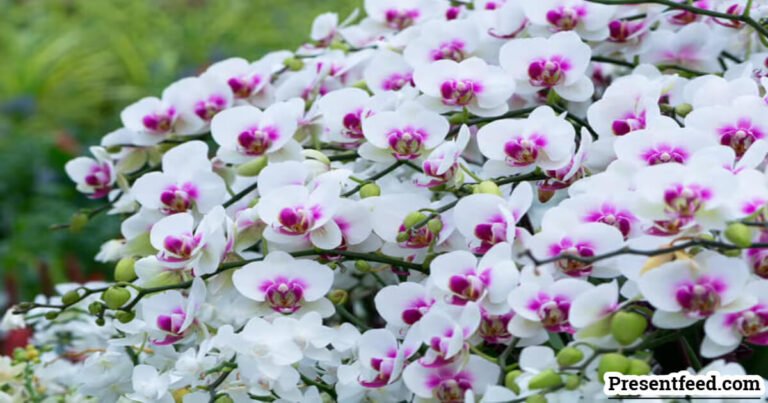Introduction to Orchids
Orchids are among the most captivating flowers on the planet, known for their stunning colors and unique shapes. With over 25,000 species and countless hybrids, they have enchanted plant lovers for centuries. But did you know that different orchids bloom at varying times throughout the year? Understanding orchid blooming seasons can transform your gardening experience from a seasonal hobby into an all-year-round passion.
Whether you’re a seasoned orchid enthusiast or just starting your journey, knowing when to expect those beautiful blooms is essential. This guide will explore the various blooming seasons of orchids, factors affecting their flowering cycles, and tips on how to extend their blooming period. Get ready to dive deep into the enchanting world of orchids!
Different Types of Orchid Blooming Seasons
Orchids are fascinating plants with diverse blooming patterns. Understanding these cycles can enhance your gardening experience.
Some orchids, like Phalaenopsis, bloom multiple times a year. They offer stunning flowers that last for months. This makes them popular among enthusiasts seeking continuous color.
On the other hand, Cattleya orchids have a defined blooming season in spring or early summer. Their vibrant blooms are known for their size and fragrance.
Then there’s Dendrobium, which typically flowers once a year during late winter to early spring. These delicate blossoms add an elegant touch to any space.
Oncidium varieties often display their beauty in fall or winter. With clusters of tiny flowers resembling dancing butterflies, they bring joy when many other plants remain dormant.
Each type has its own rhythm and charm that contributes to the allure of orchid care throughout the year.
Factors that Affect Blooming Seasons
Orchid blooming seasons are influenced by several key factors. Light is one of the most significant. Orchids thrive in bright, indirect sunlight. Too little light can delay or prevent blooms.
Temperature also plays a crucial role. Most orchids prefer daytime temperatures between 70°F and 85°F, with cooler nights around 60°F to 65°F. Sudden temperature fluctuations can stress the plant, affecting its ability to flower.
Humidity is another essential factor for these tropical beauties. High humidity levels—ideally between 50% and 70%—help maintain healthy growth and encourage flowering.
Proper watering practices cannot be overlooked. Overwatering or underwatering can lead to root rot or dehydration, both of which stifle blooming potential. Each orchid variety may have specific needs that must be met for optimal flowering times. Understanding these elements is vital for any orchid enthusiast looking to enjoy vibrant blooms throughout the year.
How to Care for Orchids During Different Seasons
Caring for orchids varies significantly with the seasons. In spring, as temperatures rise, increase watering frequency. Orchids thrive in this growth phase and appreciate a boost of humidity.
Summer brings warmth but be cautious about direct sunlight. Position your plants where they can bask in bright light without scorching their leaves. Regular misting keeps moisture levels high during hot months.
As autumn approaches, reduce watering slightly to prepare your orchids for dormancy. This transition is crucial; too much water can lead to root rot.
During winter, cut back on feeding and ensure adequate light exposure. Many varieties enter a rest period now, so it’s important not to overwater them. Keep the temperature consistent to avoid stress on your plants.
Monitoring these seasonal changes will help you provide optimal care throughout the year!
Tips for Extending the Blooming Season
To keep your orchids blooming longer, start with the right environment. Ensure they receive bright, indirect light. Too much direct sunlight can scorch their delicate leaves.
Next, monitor temperature fluctuations. Many orchids thrive in temperatures between 65°F and 75°F during the day and slightly cooler at night. Consistent conditions help promote flowering.
Regular feeding is essential as well. Use a balanced orchid fertilizer every two weeks during active growth phases to provide necessary nutrients that support blooms.
Humidity plays a crucial role too. Maintain humidity levels around 50-70%. Placing your orchid on a pebble tray with water or using a humidifier can create an ideal atmosphere.
Don’t forget pruning! After flowers fade, trim back the flower spike to encourage new growth and potential future blooms, keeping your plant healthy for its next display of beauty.
Popular Orchid Varieties and Their Blooming Seasons
When it comes to popular orchid varieties, Phalaenopsis, often called the moth orchid, stands out. These beauties typically bloom from late winter to early spring. Their long-lasting flowers can stay vibrant for several months.
Cattleya orchids are another favorite among enthusiasts. Known for their stunning and fragrant blooms, they usually flower in the late spring and summer months. The sheer variety of colors makes them a showstopper in any collection.
Dendrobium orchids have diverse blooming seasons depending on the species but generally thrive between late spring and fall. They bring an explosion of colors that brighten up any space.
Cymbidium orchids bloom during the winter into early spring months. With numerous blossoms per spike, they provide an impressive floral display when other plants may be dormant. Each variety offers something unique throughout the year.
Conclusion & Final Thoughts
Orchid blooming seasons can be both fascinating and complex. Understanding the timing of different varieties can enhance your gardening experience significantly. Each type of orchid has its own unique schedule, influenced by environmental factors such as light, temperature, and humidity.
By tailoring your care to these conditions, you’re more likely to enjoy vibrant blooms throughout the year. With proper attention and techniques, you can even encourage a longer flowering period for your orchids.
Whether you are nurturing popular varieties like Phalaenopsis or Cattleya or exploring lesser-known species, being informed about their specific needs will lead to greater success in cultivating beautiful flowers. Embrace the journey with your orchids; it promises endless beauty and rewards with each bloom they produce. Happy growing!
